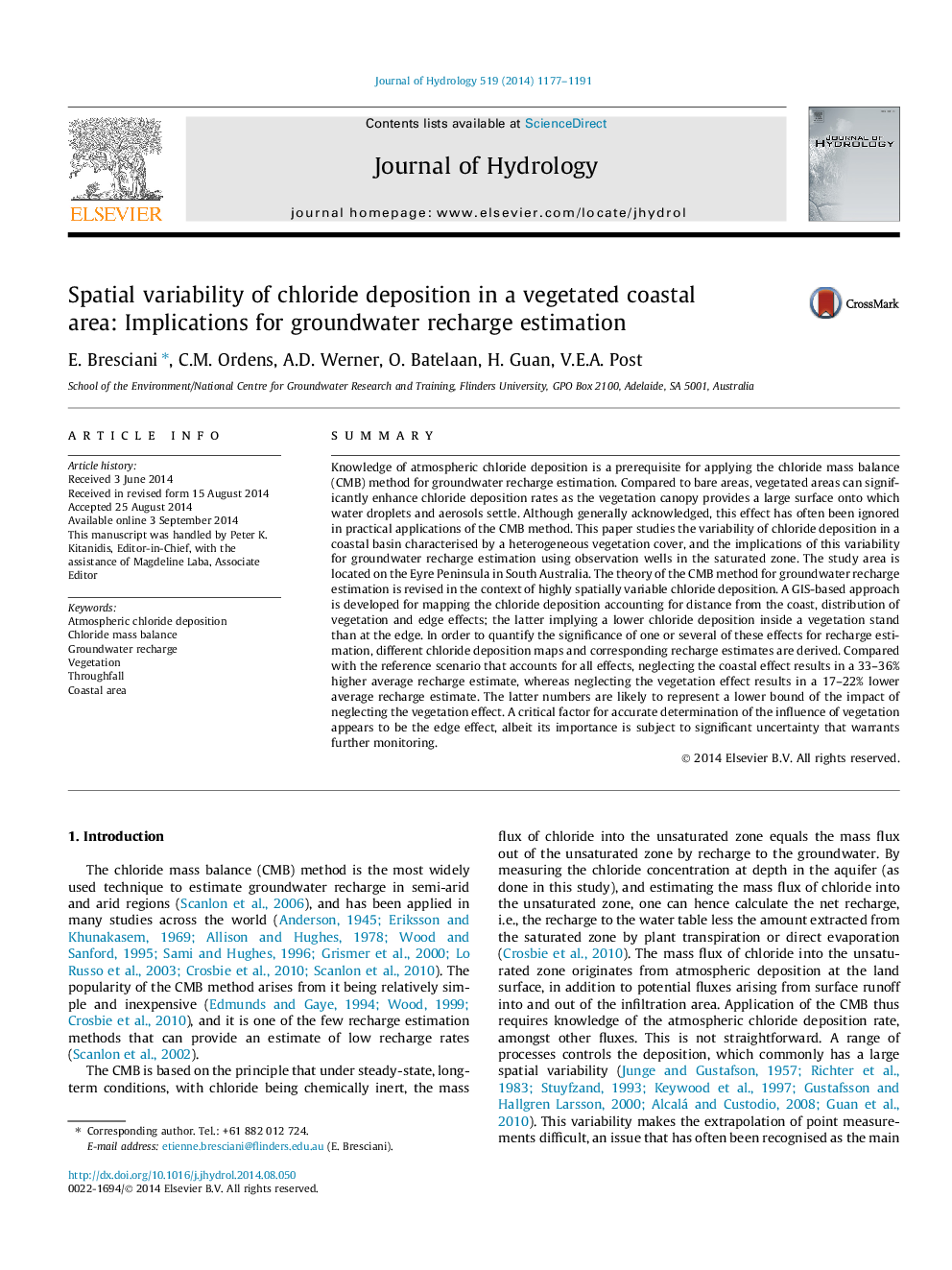| Article ID | Journal | Published Year | Pages | File Type |
|---|---|---|---|---|
| 6412595 | Journal of Hydrology | 2014 | 15 Pages |
â¢Atmospheric chloride deposition is mapped in highly spatially variable conditions.â¢The effects of vegetation and distance from the coast are quantified.â¢The edge effect is a critical factor for accurate quantification.â¢Vegetation and coastal effects impact CMB-based groundwater recharge estimates.
SummaryKnowledge of atmospheric chloride deposition is a prerequisite for applying the chloride mass balance (CMB) method for groundwater recharge estimation. Compared to bare areas, vegetated areas can significantly enhance chloride deposition rates as the vegetation canopy provides a large surface onto which water droplets and aerosols settle. Although generally acknowledged, this effect has often been ignored in practical applications of the CMB method. This paper studies the variability of chloride deposition in a coastal basin characterised by a heterogeneous vegetation cover, and the implications of this variability for groundwater recharge estimation using observation wells in the saturated zone. The study area is located on the Eyre Peninsula in South Australia. The theory of the CMB method for groundwater recharge estimation is revised in the context of highly spatially variable chloride deposition. A GIS-based approach is developed for mapping the chloride deposition accounting for distance from the coast, distribution of vegetation and edge effects; the latter implying a lower chloride deposition inside a vegetation stand than at the edge. In order to quantify the significance of one or several of these effects for recharge estimation, different chloride deposition maps and corresponding recharge estimates are derived. Compared with the reference scenario that accounts for all effects, neglecting the coastal effect results in a 33-36% higher average recharge estimate, whereas neglecting the vegetation effect results in a 17-22% lower average recharge estimate. The latter numbers are likely to represent a lower bound of the impact of neglecting the vegetation effect. A critical factor for accurate determination of the influence of vegetation appears to be the edge effect, albeit its importance is subject to significant uncertainty that warrants further monitoring.
